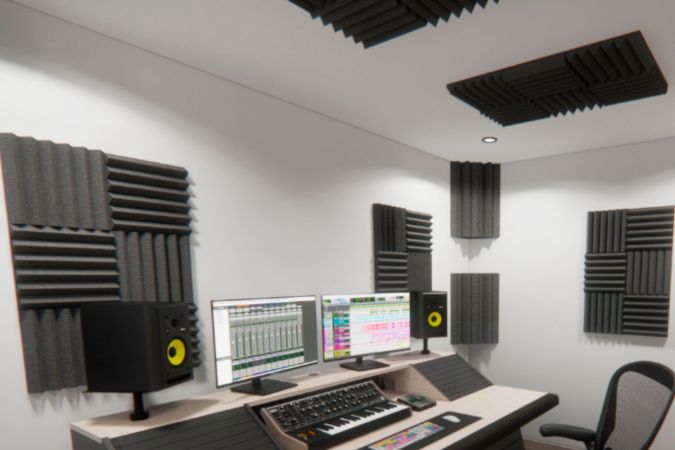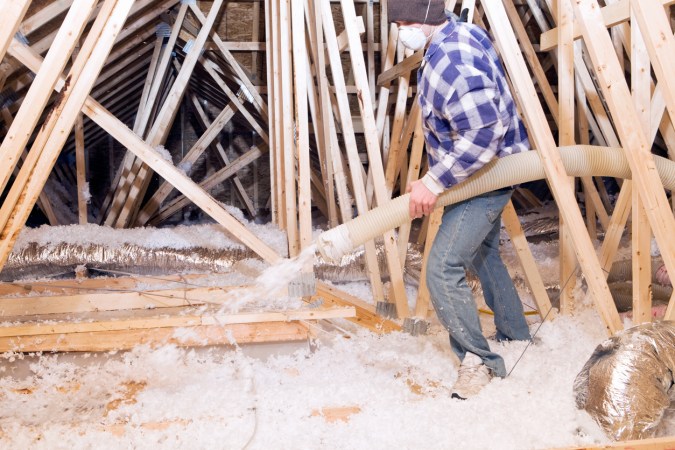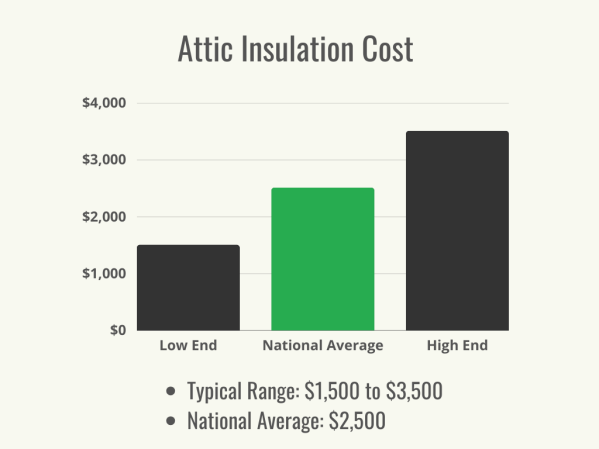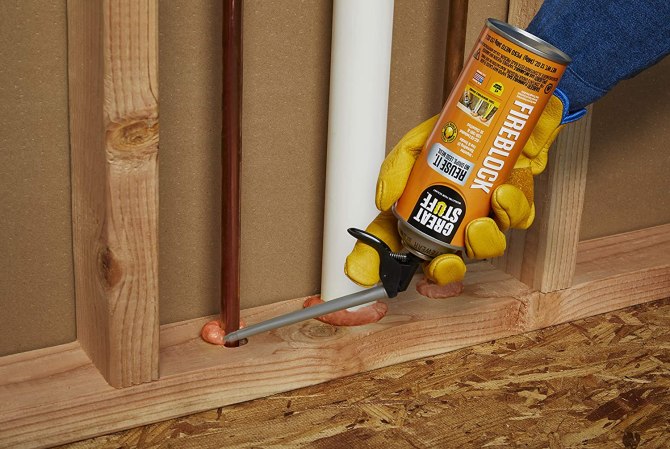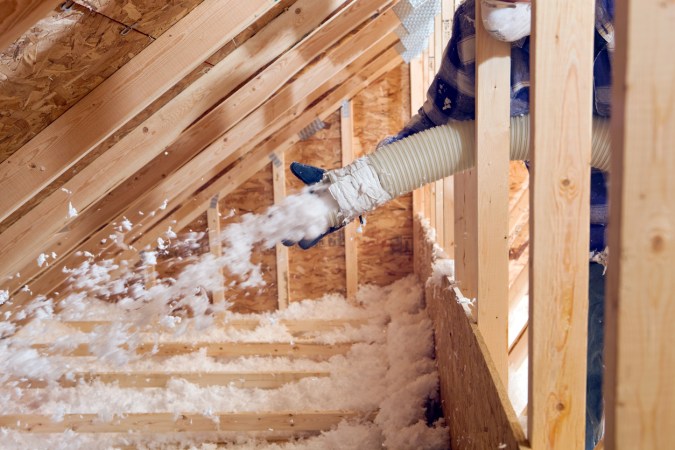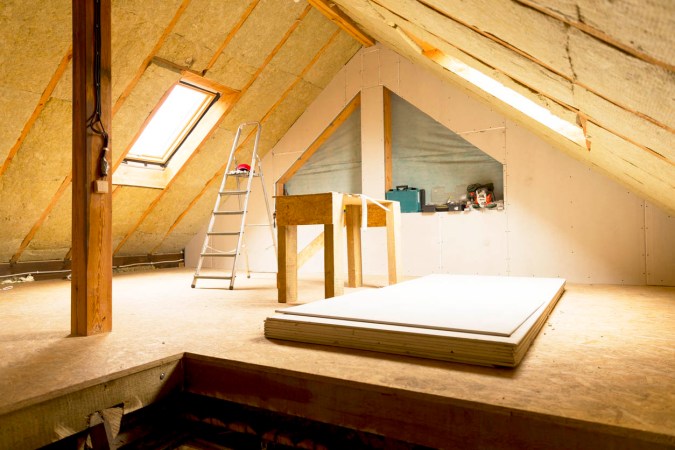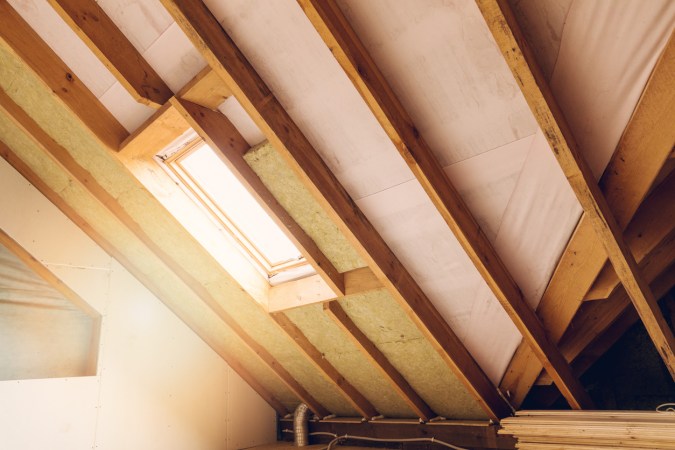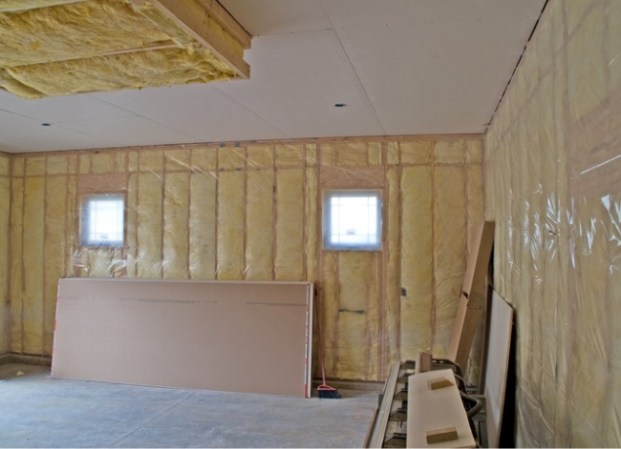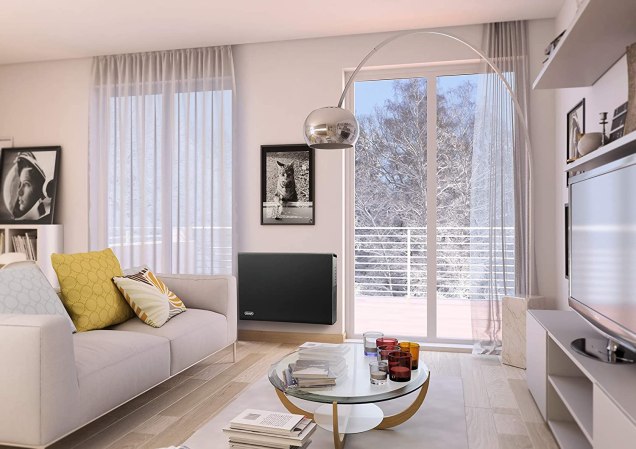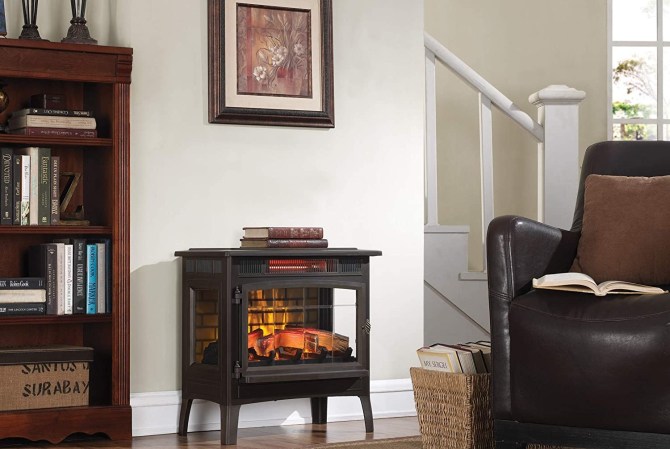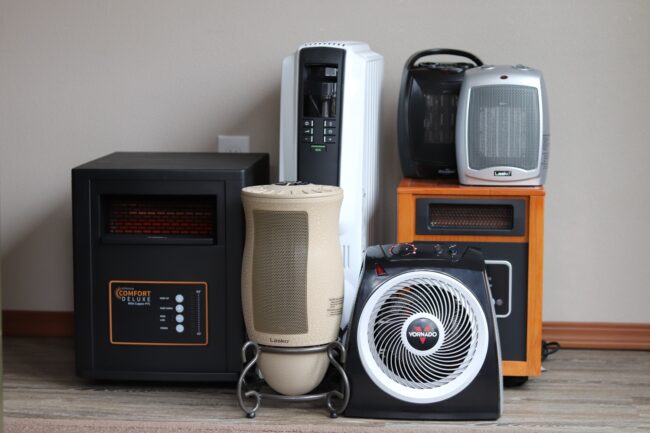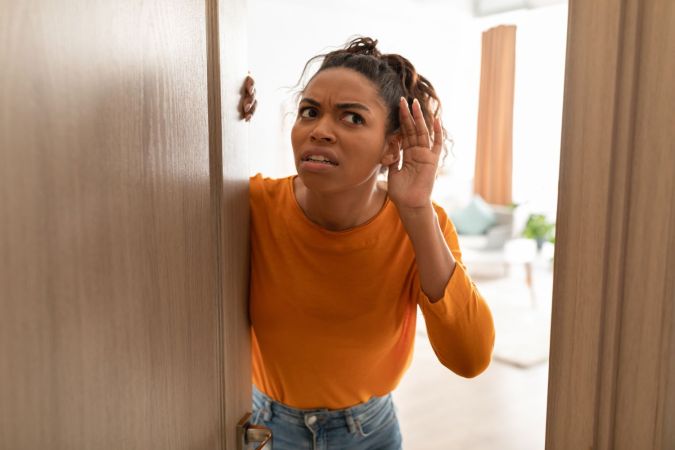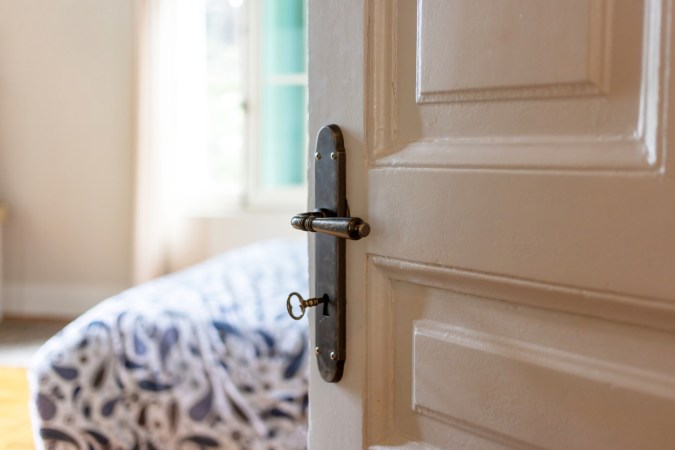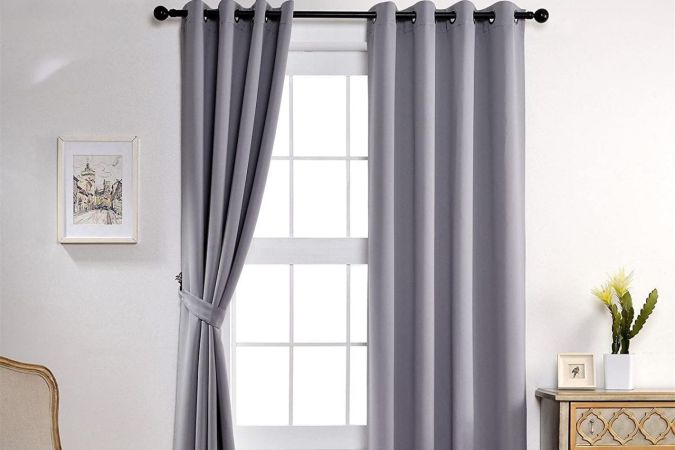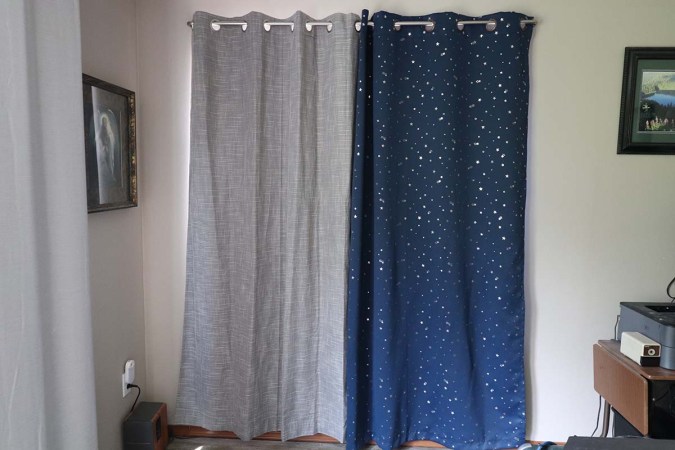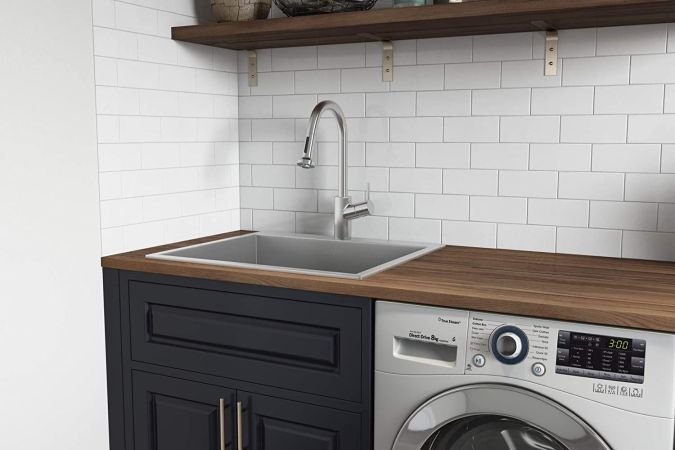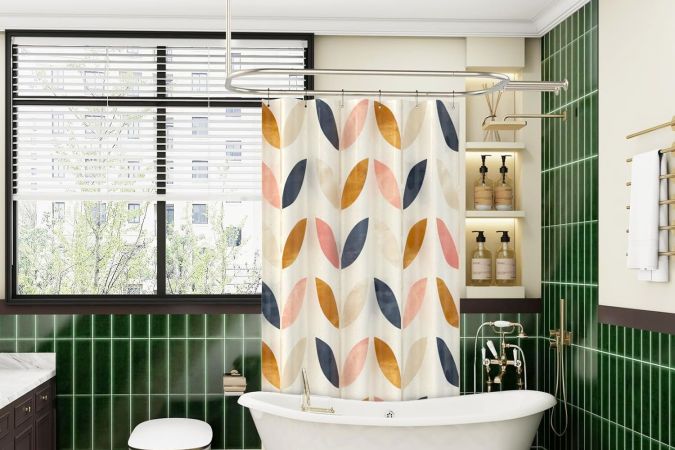We may earn revenue from the products available on this page and participate in affiliate programs. Learn More ›
Figuring out how to soundproof a room doesn’t have to be difficult. Now that working from home has become the norm for many, homeowners (and renters) are seeking to create quiet environments where they can complete their tasks without being distracted by noises from the next room or an overhead apartment.
Whether you’re part of the growing gig economy and looking to soundproof your home office, your teen has rock star dreams, or your 8-year-old has started tap-dancing, you’ll find that a little soundproofing can go a long way toward keeping the peace—and quiet—at home.
Before You Begin
First, set reasonable expectations. Don’t anticipate an utterly silent room; room soundproofing techniques will reduce sound transfer from one room to another, but they won’t eliminate the loudest noises. Still, by employing the following methods, a homeowner (or even a renter in the case of the second method) can lower annoying and distracting sounds to a bearable level. These techniques can be used for any type of room—a home office, a nursery, or a family room, or to create a soundproof bedroom.
Where possible, use the techniques in the adjacent rooms as well as the one you’re looking to soundproof. For example, if an attached garage that’s used as a workshop shares a common wall with the master bedroom, use soundproofing techniques on both the garage wall and the inside of the master bedroom wall for the best results. Learn how to soundproof a bedroom or other room to create a space where noises aren’t distracting.
How to Soundproof an Existing Wall
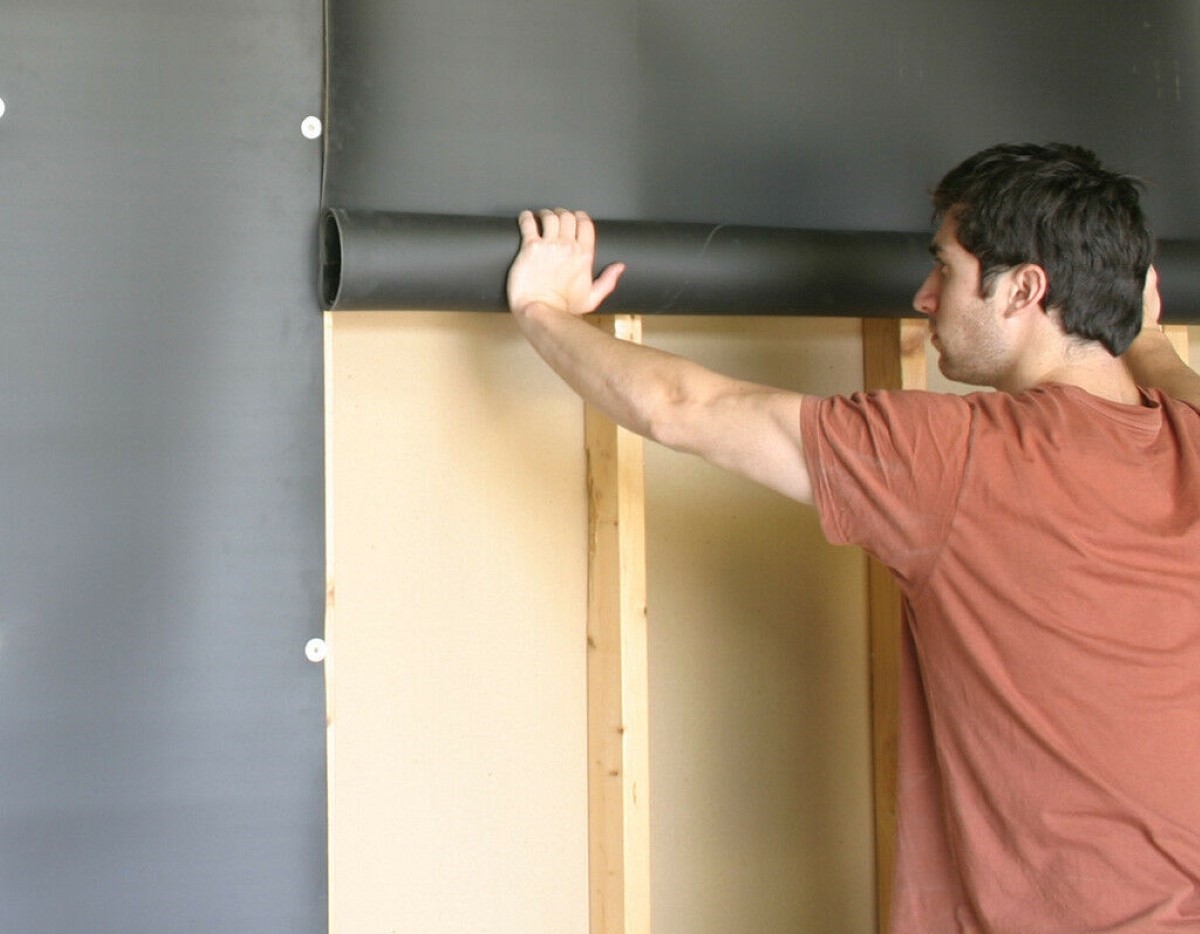
Creating soundproof walls is most effective when done during construction, but there are several ways to put a damper on ambient and active noise after the fact to make a soundproof room. To minimize noise, consider the two strategies outlined here for how to soundproof a wall.
Method 1: Using Mass-Loaded Vinyl
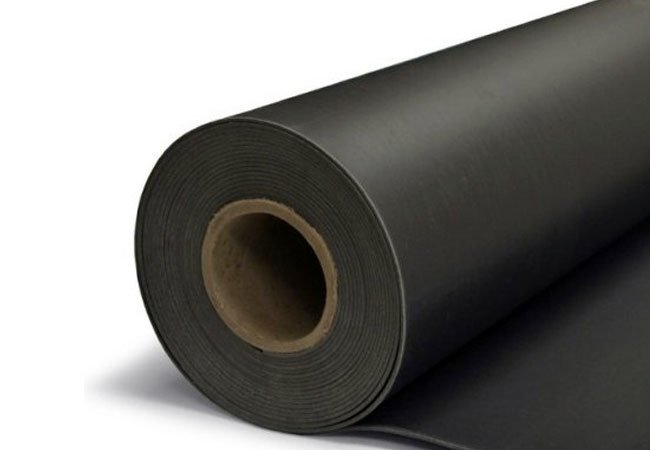
Mass-loaded vinyl (MLV) is a sound-dampening product used in places ranging from nightclubs to recording studios to hockey rinks, and it’s among the best soundproofing materials available. It comes on a roll and is available online for around $2 per square foot, depending on weight, length, and width. The thicker it is, the better it will be for blocking noise and ending echoes, but thickness, which can range from 1/16 inch to 1/4 inch, may not be listed in product specifications. If not, you’ll see a weight instead. Half-pound MLV weighs 1/2 pound per square foot of coverage and is 1/16 inch thick; 1-pound MLV is 1 pound per square foot of coverage and is 1/8 inch thick; 2-pound MLV is 1/4 inch thick.
While MLV can be hung directly on a wall, it performs best when sandwiched between drywall sheets. Doing so also allows you aesthetic options since the usually black, shiny MLV isn’t the most decoratively appealing surface! And keep in mind that MLV, such as Soundsulate, is heavy and awkward to work with. Since hanging it is a two-person job, be sure to enlist a helper.
SUPPLIES
Measuring tape
Mass-loaded vinyl
Heavy-duty scissors or utility knife
Step ladder
Drywall nails
Hammer
Type X drywall (optional)
STEP 1: Measure the walls to be soundproofed.

Prior to ordering MLV, carefully measure the walls you want to soundproof. Leaving gaps in MLV will drastically compromise its effectiveness, so you’ll want to buy enough for complete coverage from wall to wall and floor to ceiling. When calculating your needs, note that MLV tends to be sold on rolls of 2-foot or 4-foot widths.
STEP 2: Cut a section of MLV.
Measure a length of MLV that will reach floor to ceiling and then cut out a sheet with the scissors or utility knife. Cutting on top of scrap wood would be wise to protect your floor or work surface.
STEP 3: Hang the MLV.
Position the step ladder and put the MLV against the wall starting at either end, working to the other corner. To install it, snug it up against the ceiling, with your helper holding it in place. Using drywall nails and a hammer, attach the MLV to the upper portion of the wall at 12-inch intervals. Then attach the bottom portion at 12-inch intervals, and finally at 12- to 24-inch intervals down the sides of the sheet.
STEP 4: Repeat the process to cover the entire wall.
Repeat Steps 2 and 3 as required until the entire wall is covered. For the best soundproof wall, butt the MLV right up against the preceding sheet so there are no gaps. You can overlap it for a potentially greater sound barrier, but you’ll have bumps and ridges if you do so. Overlapping is not recommended if you plan to paint, install wallpaper, or install additional drywall panels.
STEP 5: For greater soundproofing, add a layer of drywall (optional).
Install a layer of drywall on top of the MLV to make the soundproofing twice as effective and give you a surface for paint or other wall covering decor. Or read on for a quick solution to hiding the glossy black vinyl with curtains—a no-commitment decor project that will also enhance soundproofing. Sometimes called “soundproof drywall,” Type X drywall is 5/8 inch thick and fire rated, making it among the best options for noise dampening.
Method 2: How to Soundproof a Wall Using Curtains
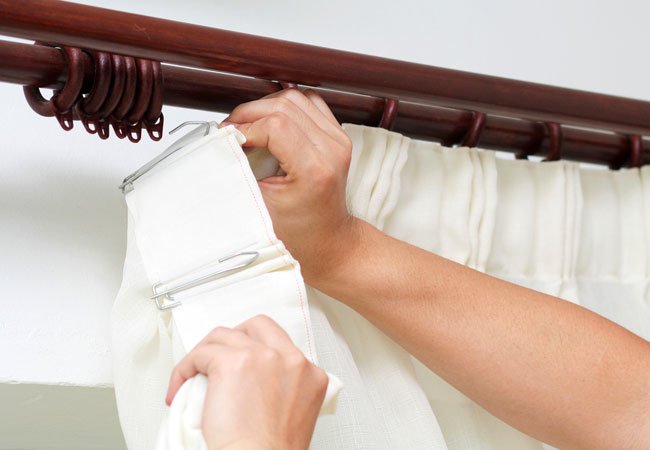
Not for windows only, curtains can create drama on the walls of any room while offering considerable soundproofing benefits. They’re relatively inexpensive and as easy to remove as they are to install. While there are curtains specifically marketed as sound dampening or “acoustic,” blackout and thermal curtains, which are primarily sold to keep light out and warmth in, also offer noise reduction. Don’t let the term “blackout” fool you, though. These curtains come in many colors and styles—it’s the inner liner that provides the blackout/thermal effect. Even heavy fabrics like velvet provide some soundproofing.
Keep in mind that when you double the weight of the fabric, its sound-reduction ability nearly triples. Yet more important than weight is curtain construction; pleated curtains can be three times as effective against noise as those that hang straight. The pleats double the fabric’s thickness in many areas and act as baffles, absorbing sound waves and stopping them in the fabric folds.
Remember, sound dampening is the goal, so floor-to-ceiling curtains covering the entire wall will have the most impact. For the best results, hang multiple panels of soundproof curtains to fill the wall. Good options include the BGment Blackout Curtains and Nicetown’s 100% Blackout Curtains. If you’re feeling adventurous, mix colors and patterns for a funky feature wall!
SUPPLIES
Measuring tape
Sound-absorbing curtains (preferably floor-to-ceiling length)
Bathroom scale
Hanging system for curtains (rods, wires, or other systems rated for your curtain weight)
Screwdriver
Screws
Stud finder (optional)
Weight-rated drywall anchors (optional)
Iron or Steamer
STEP 1: Measure the walls.
Measure the walls before purchasing the curtains. When shopping, check package info for the curtains’ weight; you’ll need this to choose rods or another hanging system sturdy enough to hold them. If you’re set on curtains that don’t include the weight on the packaging, weigh them on your bathroom scale at home. Tip: Keep them in the package so they’ll sit easily on the scale.
STEP 2: Select a hanging system that will hold heavy curtains.
Purchase a hanging system weight-rated for the curtains (packaging or website marketing should tell you the weight load they can handle). If they weigh 40 pounds and the wall to be covered is 12 feet long, you’ll need a rod or hanging system that can handle roughly 3.5 pounds per foot, so keep that weight rating in mind when making your choice. Heavy-duty, ceiling-mount brackets, such as the KXLIFE brackets, will hold the heaviest curtains.
STEP 3: Determine the right hanging height.
Before mounting the hanging system, ensure enough space above it for the top of the curtains to move freely without bunching against the ceiling—a half-inch or inch should do. Locate wall studs with a stud finder, or use proper weight-rated wall anchors before boring into the wall with screws. Affix the rod or hanging system to the walls as recommended by the manufacturer.
These articles will guide you through stud finding and curtain hanging in detail:
Three Ways to Find a Wall Stud (Without Fancy Equipment)
How to Install Curtain Rods
STEP 4: Smooth out creases in the curtains.
Iron or steam curtains to remove creases and wrinkles from the packaging. Check the label to see what temperature the manufacturer suggests and iron accordingly.
STEP 5: Hang the curtains.
Hang the curtains on the rod or wire system and then “bunch” them together in equal amounts across the entire wall for a consistent look. When soundproofing a room, keep in mind that pleated, bunched fabric will absorb more sound than flat fabric, so ample curtains are a plus.
Soundproofing Specific Parts of a Room
Soundproofing a room’s walls will go a long way toward reducing unwanted noise, but for an even quieter room, consider soundproofing other areas. Depending on the type of noise and where it’s coming from, you may also want to add noise-dampening techniques to windows, doors, and other areas in the room.
Windows
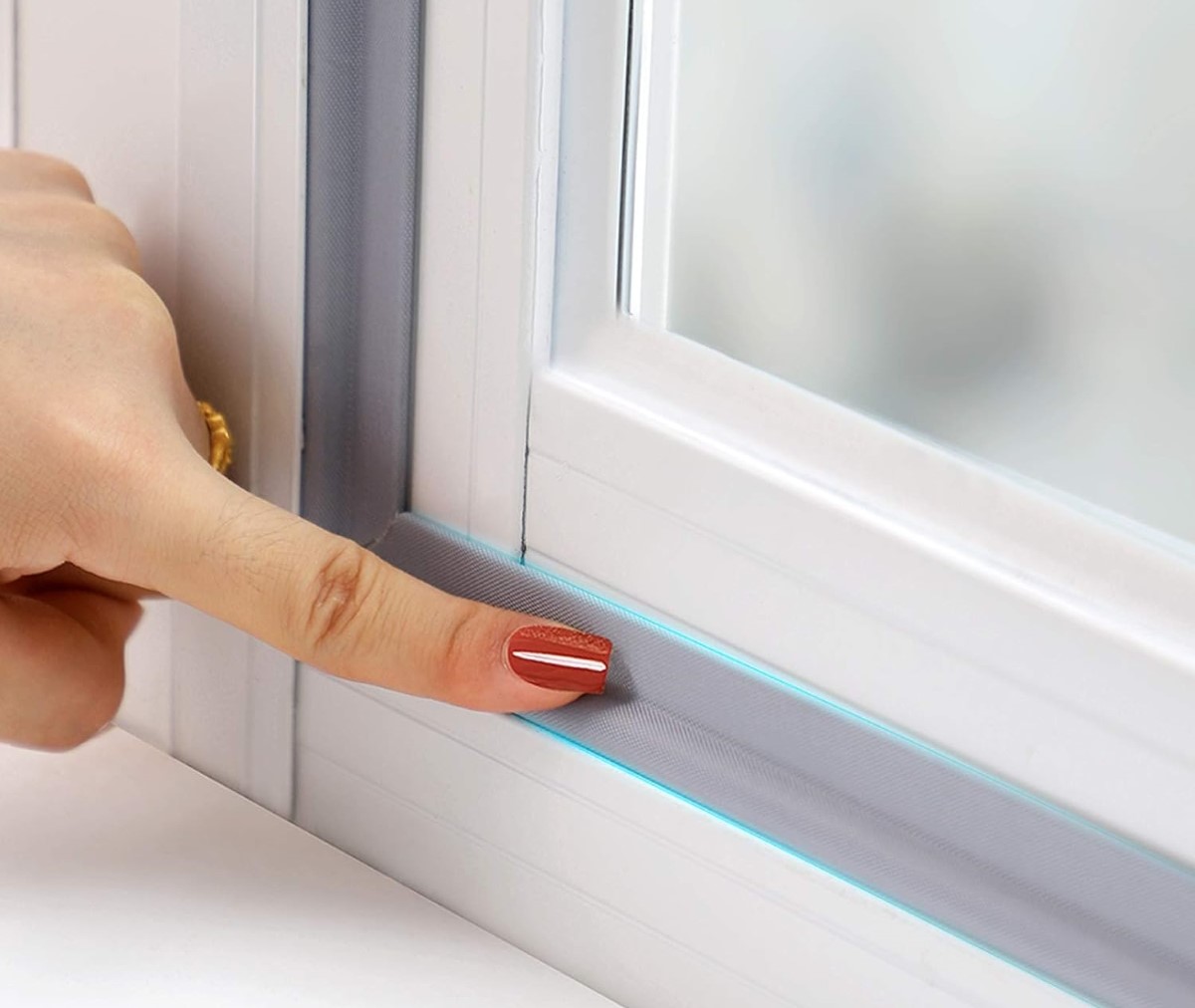
Windows let in fresh air and light, but if the window faces a busy urban street, the hustle and bustle of commuters, barking dogs, and emergency vehicles can make it seem as though they’re right in the room. To soundproof a room and mute noise transfer through windows, consider hanging one or more layers of thick curtains over windows, installing storm windows, or using a soundproof weather strip product, such as a draft stopper, to block noise. Soundproofing windows is a vital step in reducing unwanted noise
Doors
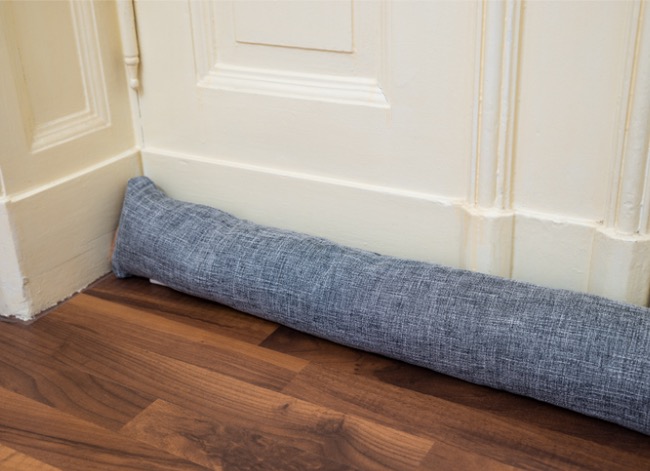
Interior doors often have a gap at the bottom that allows air (and noise) to enter a room. Soundproofing a door typically involves using a product that will seal the gap. To soundproof a bedroom door or home office door, try installing a door sweep, such as Suptikes’ Huge Gap door draft stopper.
For renters who aren’t allowed to attach anything to a door, roll up a towel and use it to block the under-door gap to reduce noise transfer. Commercial products are also available, such as the Sunolga draft stopper, and they often come with loops on the ends to hang the item on a door knob when not in use.
Ceilings
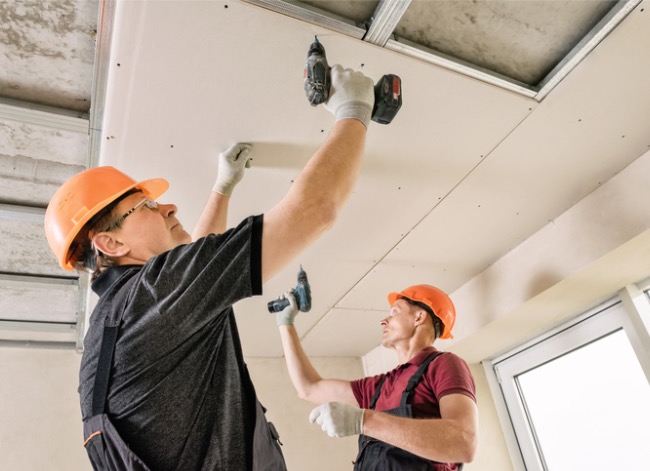
Trying to focus on work when the kids are playing in the room overhead is challenging at best—virtually impossible at worst. Reducing noise transfer through a ceiling can be accomplished by soundproofing the floor of the room that lies overhead. For those who live in an apartment and don’t have access to the room above, noise-dampening methods are limited.
Homeowners can sandwich a layer of MLV between the existing ceiling drywall and then hang a second layer of drywall. Unlike the MLV method mentioned above to soundproof walls, the simplest way to install MLV overhead is to cut and attach it first to the new drywall panels and then install the panels. Since MLV is heavy, a drywall lift will be necessary for raising the panels.
In a rented apartment, fewer good options are available. Still, renters can reduce ceiling sound transfer using ultra-lightweight foam boards, such as UCreate foamboard. Attach the boards to the ceiling with removable mounting putty, such as Scotch Mounting Putty, that won’t harm the ceiling.
Floor
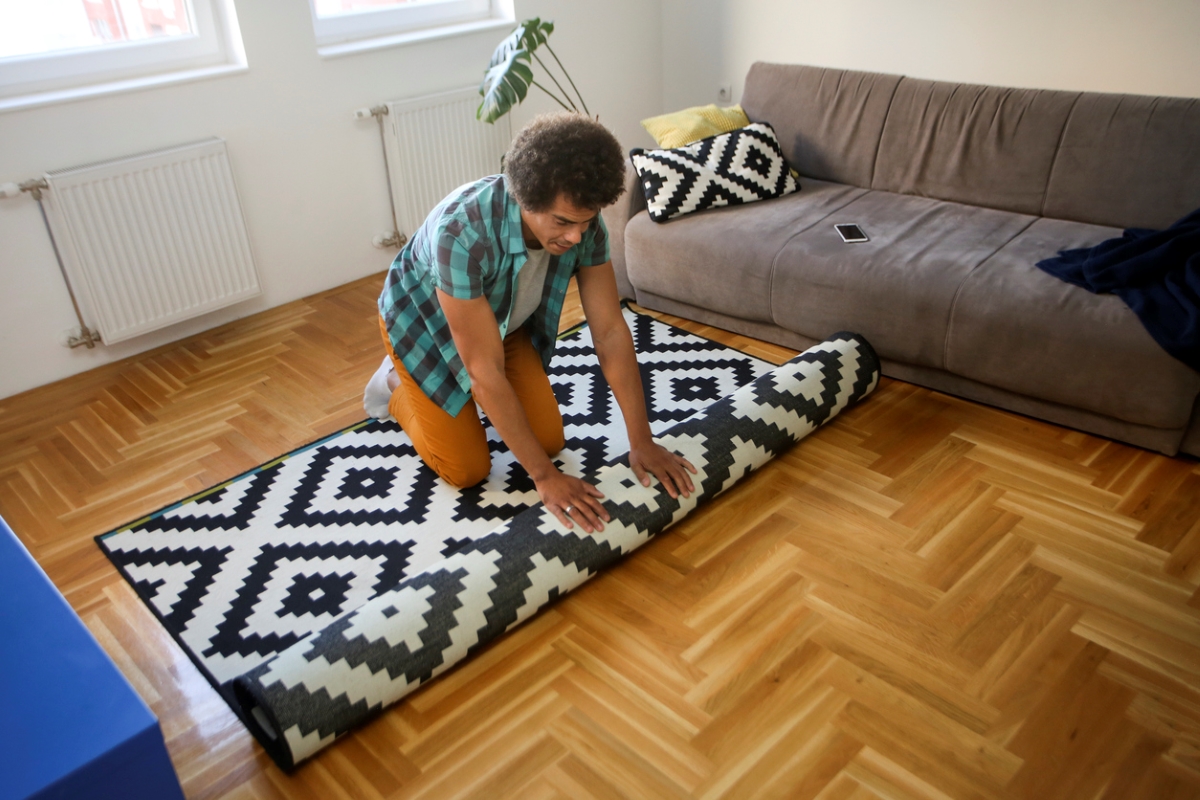
Soundproofing floors by reducing noise transfer from a room below is relatively easy by carpeting the floor or covering hard flooring with one or more large area rugs. When used in combination with the other soundproofing techniques, this may be sufficient for dampening most noises to a tolerable level.
Homeowners may want to soundproof the ceiling of the room below (described previously) for additional noise reduction.
Renters typically cannot structurally modify floors or ceilings, so if adding rugs isn’t sufficient, consider covering hard flooring with a layer of cork, such as Corksidol’s ½-inch-thick cork tiles, to help absorb sound. A large area rug can be added over the cork to protect it and offer a finished look.
Pipes
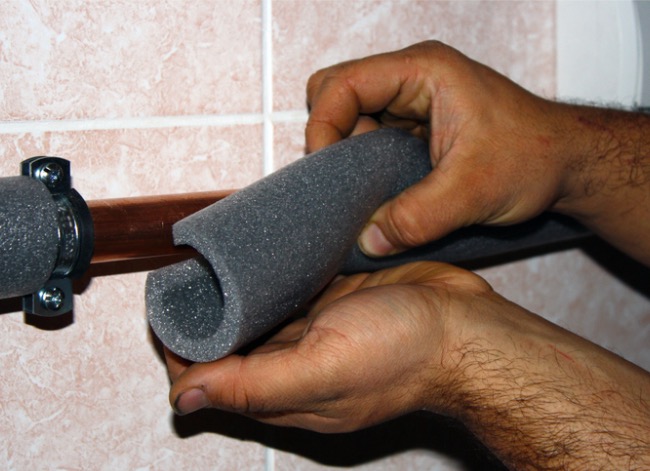
Water hammer is the product of hydraulic shock, and it can be loud enough to startle anyone who isn’t expecting it. Water hammer occurs when the water is shut off abruptly, and the water supply pipe reacts by jerking and bumping into other pipes or framing members in walls or floors.
If you have access to the offending pipes, slipping some foam pipe insulation around them, such as Foam King Brand foam pipe insulation, will usually stop the problem. Alternatively, a plumber can install a water hammer arrester, such as the Sioux Chief water hammer arrester, to keep the pipe from jerking when the water is turned off.
Soundproofing With Furniture and Feng Shui

Hard objects, such as metal and solid wood tables and chairs, do not absorb sound so that noise can bounce around a room. Swapping hard chairs for upholstered chairs and overstuffed sofas will help dampen sound waves and keep them from echoing in the room.
Additionally, following beneficial feng shui practices can also help block noise. Feng shui is a Chinese system of orienting rooms and adding features in a harmonious and pleasing manner. By adding a water feature, the trickling sound of the water will help distract from background noises, and placing live plants throughout the room will help absorb sound while freshening the air.
Final Thoughts
The best soundproofing involves using a combination of techniques to block sound transfer from outside a room while absorbing sounds inside the room. The best time to soundproof a home (or room) is during new construction when the walls and floors can be framed in a manner to reduce sound transfer, but unwanted noises can be significantly stifled in existing homes as well.
In general, products and materials that are dense and soft will absorb the most noise, including MLV, carpeting, cork, and curtains. Whether you own or rent your home, you don’t have to live with distracting sounds. Learning how to make a room soundproof goes a long way toward maintaining a comfortable living space.
FAQs
Q. Do egg cartons absorb sound?
Real egg cartons are not used to block sound. Rather, egg carton-shaped foam, such as IZO All Supply’s egg crate panels, are used to line walls to dampen noise.
Q. What materials can block sound?
The best sound-blocking materials are dense and soft, such as foam and carpeting.
Q. What is the most effective way to soundproof a room?
The most effective way is during new construction by utilizing staggered wall studs and joists to create a dead-air space that reduces sound transfer.
Q. Can a room be made soundproof?
Yes, but making a room completely soundproof involves specialized construction practices that create dead-air spaces in floors and walls. Sound reduction is what most are going for.

